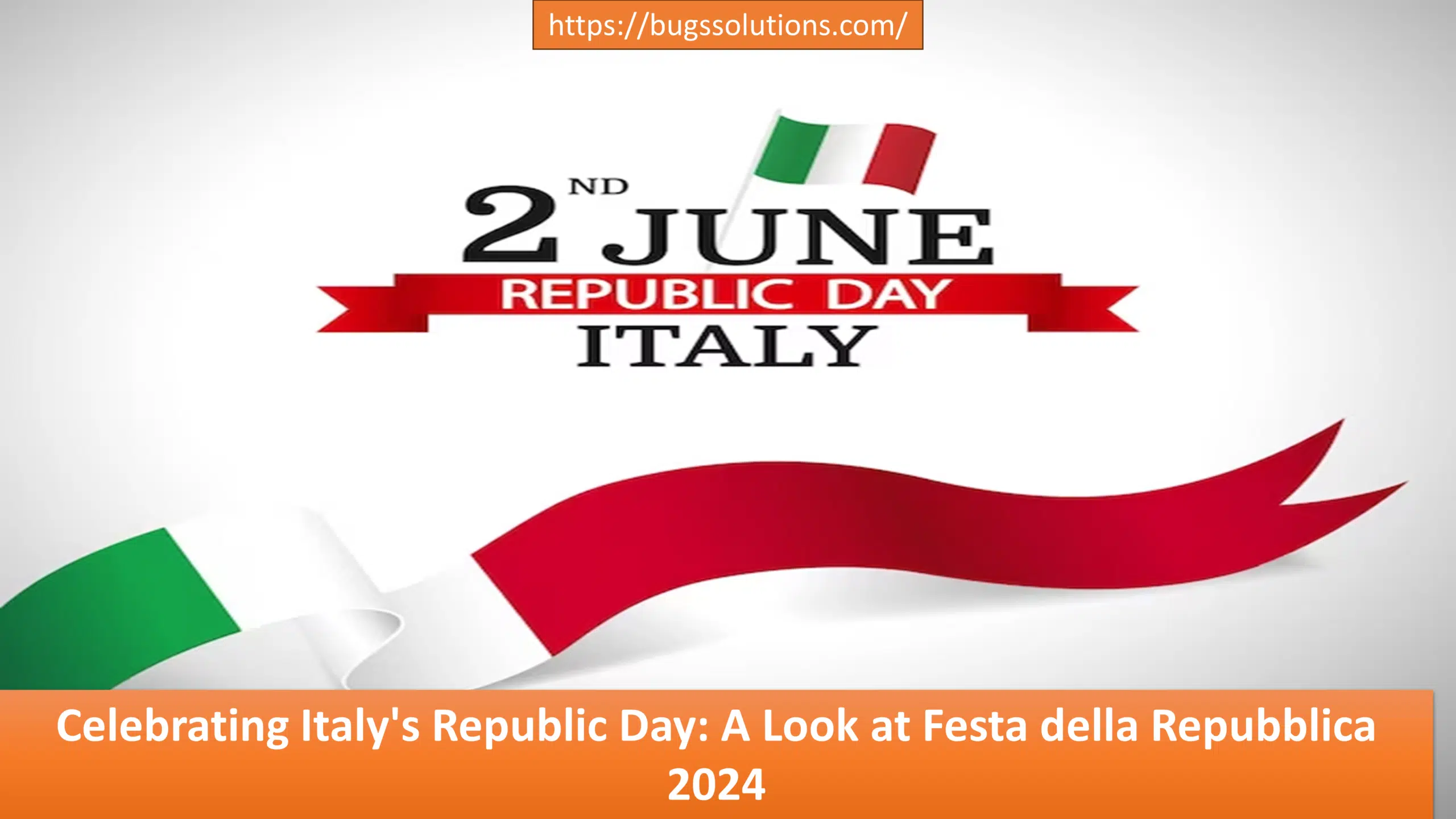Historical Significance of Italy’s Republic Day
Italy’s Republic Day, known as Festa della Repubblica, holds profound historical significance, marking a pivotal moment in the nation’s history. The journey towards this day began in the aftermath of World War II. The devastation wrought by the war left the Italian populace yearning for change and a new beginning. Disillusionment with the monarchy, which had been unable to effectively navigate the crises of war and its aftermath, grew among the citizens.
The critical turning point came with the institutional referendum held on June 2, 1946. This referendum was a watershed moment, as it allowed the Italian people to voice their preference for the future governance of their country. Facing a choice between maintaining the monarchy or establishing a republic, the people opted for a republic by an overwhelming majority. Approximately 12 million votes were cast in favor of abolishing the monarchy, reflecting the public’s desire for a new system of governance that could better represent their interests and aspirations.
World War II played a significant role in shaping this decision. The war had exposed the weaknesses and failures of the existing monarchical system, leading to widespread support for a republic as a means to ensure more democratic and accountable governance. The referendum’s outcome marked the end of the reign of King Umberto II, the last king of Italy, and the beginning of a new era for the nation.
The first celebration of Republic Day took place on June 2, 1947. Since then, it has been commemorated annually, serving as a reminder of the country’s transition to a republic and the values of democracy and freedom that underpin it. Festa della Repubblica is not only a celebration of Italy’s political transformation but also an opportunity for Italians to reflect on their history and the enduring significance of their choice to embrace republicanism.
Every year, Google Doodle pays homage to significant cultural and historical events worldwide, and Italy’s Republic Day in 2024 was no exception. The Google Doodle for this year was a vibrant and symbolic representation of Italy’s momentous transition from a monarchy to a republic on June 2, 1946. The design featured a rich palette of Italy’s national colors—green, white, and red—interwoven with iconic symbols that resonate deeply with Italian heritage and pride.
The focal point of the doodle was an artistic rendition of the Altare della Patria, also known as the Victor Emmanuel II Monument, which stands as a testament to Italy’s unification and independence. Surrounding the monument were depictions of olive branches, symbolizing peace, and laurel wreaths, representing victory and honor. The background showcased a clear, azure sky, reflecting hope and the promise of a prosperous future for the republic.
Google’s tribute was accompanied by a thoughtful description that encapsulated the essence of the day: “This public holiday commemorates when Italy transitioned from a monarchy to a republic, giving the power back to the people.” The doodle not only celebrated the historical significance of Republic Day but also highlighted the enduring spirit of Italian democracy and the collective identity of its citizens.
The international recognition of Italy’s Republic Day through Google’s platform underscores the global appreciation for this pivotal moment in history. By featuring the doodle on its homepage, Google facilitated a broader understanding and acknowledgment of Italy’s journey towards self-governance. This digital celebration provided an opportunity for people around the world to learn about and reflect on the values of freedom, democracy, and unity that Republic Day embodies.
In capturing the essence of Festa della Repubblica, the 2024 Google Doodle served as a visual and educational tribute, fostering a sense of shared history and cultural awareness across borders.
Festivities and Traditions in Rome
Rome holds a pivotal role in the Republic Day celebrations, serving as the epicenter of national pride and unity. The most prominent event is the grand military parade, which takes place along Via dei Fori Imperiali. This parade features a diverse array of participants, including military personnel, police forces, and representatives from various civil organizations, all marching in unison to the rhythmic cadence of the marching bands. It stands as a powerful symbol of Italy’s unity and strength.
A focal point of the festivities is the solemn flag-raising ceremony at the Altare della Patria, also known as the Altar of the Fatherland. The raising of the tricolore, Italy’s national flag, is a momentous occasion that commands respect and reverence. As the flag ascends, it is accompanied by the playing of the Italian national anthem, evoking a deep sense of patriotism among the spectators.
Another significant event is the wreath-laying ceremony at the Tomb of the Unknown Soldier, presided over by the President of Italy. This ceremony pays homage to the fallen soldiers who have sacrificed their lives for the nation. The laying of the wreath symbolizes the nation’s gratitude and respect for its heroes, reinforcing the values of courage and sacrifice that underpin Italy’s national identity.
In addition to these official ceremonies, the city of Rome comes alive with various cultural events and concerts. Public squares and historic sites become stages for performances that showcase Italy’s rich cultural heritage. These events provide an opportunity for citizens and visitors alike to engage with the country’s history and traditions in a festive and communal atmosphere.
The celebrations in Rome are not merely a series of events; they are a manifestation of Italy’s enduring spirit and unity. Each tradition, from the parade to the flag-raising and wreath-laying ceremonies, plays a crucial role in fostering national pride and collective memory. Through these time-honored practices, Italy reaffirms its commitment to the values of democracy, freedom, and unity that are the bedrock of the Republic.
Family Celebrations and Public Activities
On June 2nd, families and communities across Italy come together to celebrate Republic Day, known as Festa della Repubblica. This national holiday is marked by a plethora of activities that highlight the communal and familial spirit intrinsic to Italian culture. From the north to the south, Italians observe this day with a variety of festive traditions, making it a truly nationwide celebration.
One of the most common ways to celebrate is through picnics and outdoor feasts. Families prepare an array of traditional Italian dishes, bringing together generations to enjoy home-cooked meals in the open air. Parks and beaches become popular destinations, filled with the sounds of laughter and the aromas of Italian cuisine. Historical monuments and public squares also serve as gathering spots where communities come together to honor the significance of the day.
Also Read : How to Watch Cricket in the US: Where Stream 2024 ICC Men’s T20 World Cup and world cup schedule
In many regions, the celebrations include local variations and unique traditions. For instance, in Rome, the capital city, the Festa della Repubblica is marked by a grand military parade along Via dei Fori Imperiali, culminating in a spectacular flyover by the Italian Air Force. Meanwhile, in smaller towns and villages, the day might be observed with local fairs, concerts, and cultural performances, reflecting the diverse ways in which Italian heritage is celebrated.
Public activities are not limited to food and parades. Many museums and historical sites offer free or discounted entry, encouraging families to explore Italy’s rich cultural heritage. Various civic organizations also host educational events, workshops, and exhibitions that promote national pride and historical awareness among citizens.
Regional variations in the celebrations further underscore Italy’s cultural diversity. In Sicily, for example, the day might be marked by traditional music and dance performances, while in Tuscany, wine tastings and culinary festivals are common. These regional differences add a unique flavor to the Festa della Repubblica, ensuring that while the spirit of unity prevails, the local customs and traditions are also proudly showcased.










